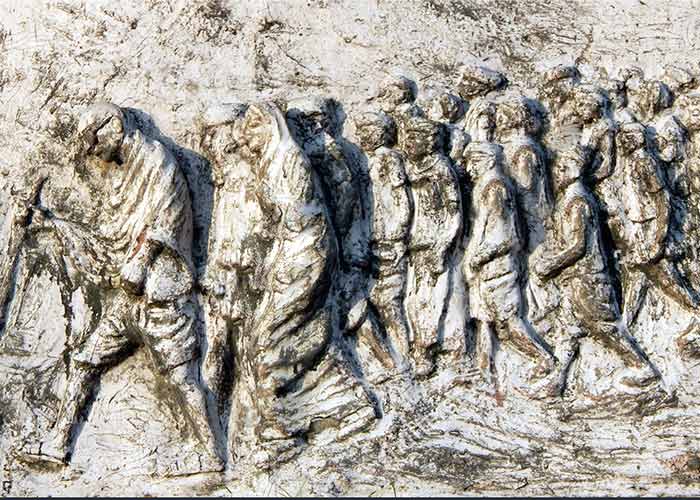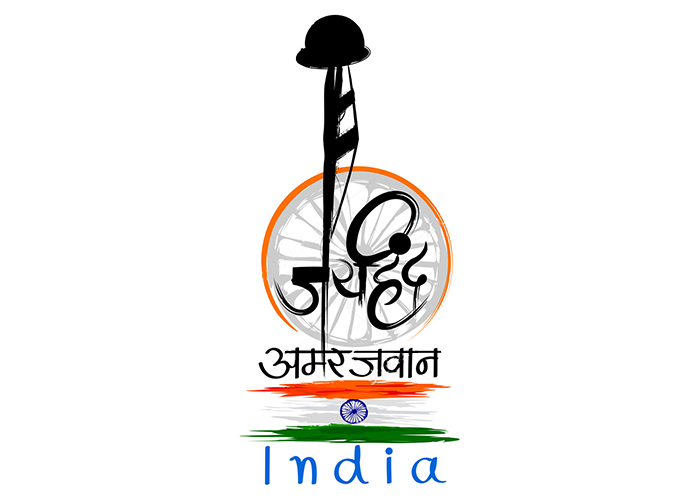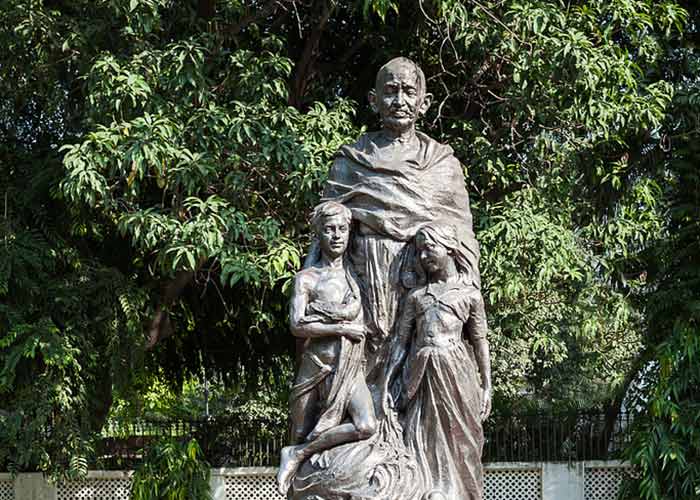Dandi March day is celebrated every year in India on 12th of March with great enthusiasm by the people to commemorate the Salt Satyagraha as a non violence campaign run by the Bapu in the continuation of Indian Independence Movement.
Dandi March Day 2019
Dandi March Day 2019 was observed on 12th of March, Tuesday.
Prime Minister and the members of all political parties paid tribute to Mahatma Gandhi on the occasion. People also held talks and discussions and shared the history of Dandi March and its importance.
There were various programs which were conducted across the nation to commemorate the day of Salt Satyagraha of Mahatma Gandhi. A Dandi Salt Challenge was organized in Gujarat which included a cycle and marathon competition on the 400 Km route of Dandi March.
What is a Dandi March/Salt March
Dandi March is a Salt March which is named after the Salt Satyagraha revolution in India during the Indian Independence Movement. The Salt March has also been named as the White Flowing River as this campaign was run by people wearing white khadi. Dandi March was started in India on 12th of March in 1930 under the leadership of the Mahatma Gandhi (Bapu) as an important element to the Indian independence movement.
This march was started in India as a direct action campaign against the tax over by the British Rule. It was a nonviolent protest by the Indians to resist the British salt domination in India. It is considered as the wider Civil Disobedience Movement of the Indian against British Rule. It was raised by the Indian people as a big challenge to the British authority.
Who Led the Dandi March
Dandi March was led by the Mohandas Karamchand Gandhi (Mahatma Gandhi or Bapu) from his Sabarmati Ashram (near Ahmedabad) to the Dandi, a coastal village located in a city named Navsari, Gujarat. It was a continuous movement by the Indian people for 24 days and 390 km march to get own prepared salt without paying any tax to the British Government.
Salt laws were broken by the Bapu at around 6:30 am on 5th of April in the year 1930. This march caught fire as a big Indian civil disobedience against salt laws of British Raj. This campaign, during which a mass of Indian people joined to fight for their own freedom, had significantly affected the British attitudes towards the Indian independence.
It was a huge salt campaign in order to generate own salt for the people of India, to oppose the tax payment and continue the Indian Independence Movement. Bapu led the Indian people towards south coast in order to continue the salt production after starting the salt making process at Dandi.
Before starting a Satyagraha at Dharasana Salt Works (25 miles away from Dandi towards south), he got arrested on 4–5th (midnight) of May in the year 1930. Together with the Bapu, around 80,000 people of India were sent to the jail after the Salt Satyagraha.
The Salt Satyagraha campaign was run by the leader of India, Mahatma Gandhi, as a nonviolent protest against the British Rule. The literal meaning of the Satyagraha is the “truth force”.
This non violent protest in the Dharasana covered a big area all over the world as an effective civil disobedience news against the social and political injustice of British. This campaign in India affected a lot to the American civil rights activist, Martin Luther King, Jr., and helped him to his civil rights fight for blacks during 1960s.
Contribution of Dandi March in the Indian Independence Movement
Dandi March campaign was the continuation for the Indian Independence Movement which affected the British rule to the great extent. In the 1929, during the midnight on 31st of December a tricolor Indian flag was made by the Indian National Congress at Lahore. The Indian National Congress party was led by the Mahatma Gandhi and Pandit Jawaharlal Nehru for the freedom or Purna Swaraj of India.
India was ruined in every aspect such as politically, economically, culturally and spiritually by the British Rule. Salt Satyagraha was proved as a big way to break the British rule and accomplish Purna Swaraj in the India. This campaign was held under the leadership of Gandhi Ji as a first civil disobedience against the British salt tax.
According to the Salt Act of 1882, British authority was authorized to manage the manufacturing of salt to which the people of India were bounded to purchase the salt of colonial government.
The salt tax by the British rule over the Indian people was very hurtful event for the poorest Indians. As salt was the daily use necessity of the life like water and air, people of India were forced to take salt from the British authority by paying tax.
In order to remove the salt tax and produce own salt, Bapu and other 78 satyagrahis including Sarojini Naidu raised their foot from Sabarmati Ashram towards the coastal village of Dandi, Gujarat on 12th of March in 1930.
The first day of the march was ended with 21 km in the Aslali village. Throughout the whole march, various villages were passed and crowds increased on the way of March by beating the drums and singing the Hindu bhajan “Raghupati Raghava Raja Ram”. Bapu denoted in his speech that the salt tax is inhuman whereas the salt Satyagraha is a “poor man’s battle”. This movement was very necessary to bring poor people on the way to fight for their own freedom, rights and country.
They started making their own salt by boiling the salty mud into the seawater to shake the British Empire against the salt tax. Gandhi Ji told his thousands of followers to start making salt alongside the seashores wherever it is possible. It was started making and buying the illegal salt at the seashore, even the salt made by Gandhi Ji was sold for 1,600 rupees at that time and he was arrested including sixty thousand people by the British government.
Salt Satyagraha brought a big revolution as a mass Satyagraha when people started denying for the cloths, goods and variety of tax payment by the British rule. Gandhi Ji’s close associates, Ghaffar Khan and C. Rajagopalachari (later became the first Governor General of the independent India) were also arrested because of being involved in the Salt Satyagraha.
Dandi March Celebration in India
Great Salt March campaign celebration is organized every year by the Mahatma Gandhi Foundation to commemorate the event which has also been named as the “International Walk for Justice and Freedom”. The grandson of Mahatma Gandhi (Tushar Gandhi) including several other marcher follow the same Dandi route.
During the celebration of the year 2005, the march was started on 12th of March in Ahmedabad in the presence of Sonia Gandhi. In order to commemorate the event, a series of Dandi March related stamps has been issued by the Government of India on its 75th anniversary in 2005.





